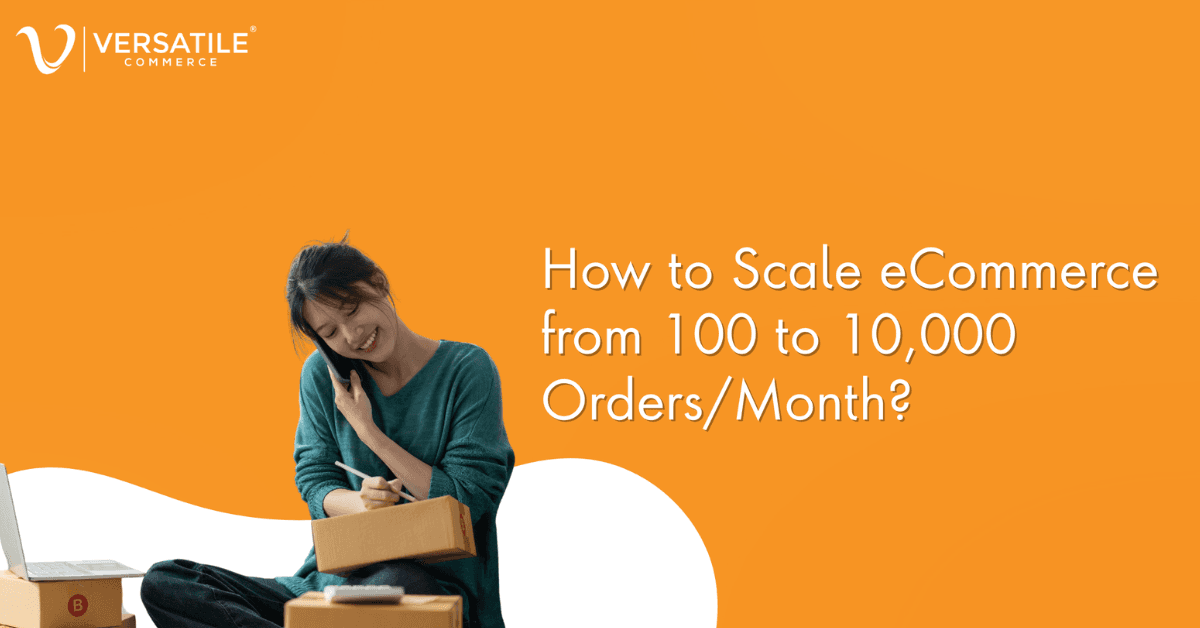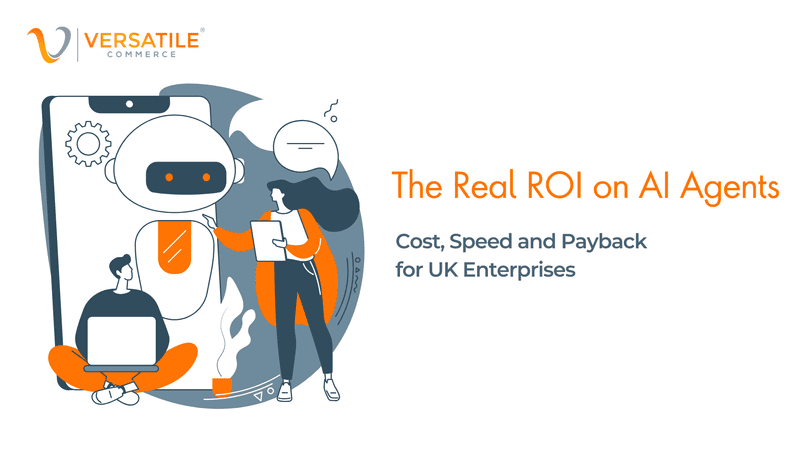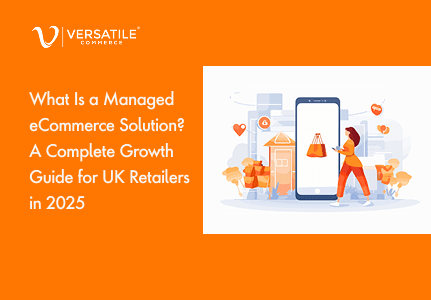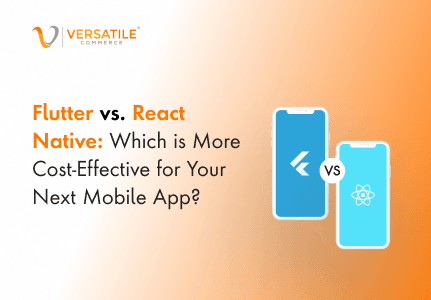
Scaling from a handful of orders each week to managing thousands every month is the goal of every ambitious ecommerce founder. Yet the leap from early traction to sustainable growth is where many promising businesses are stalled. The difference lies in how intentionally you prepare to scale ecommerce, not just grow it by chance.
Globally, retail ecommerce sales are projected to exceed 4.3 trillion U.S. dollars in 2025, according to Statista, with even greater expansion forecasted in the coming years. This massive market potential brings opportunity but also demands a smarter approach to operations, fulfilment, and technology.
A clear plan for scaling ecommerce business protects your brand from operational chaos, customer churn, and wasted spend. As your orders multiply, partnering with the right managed ecommerce solution can help you handle complexity and focus on growth instead of back-end bottlenecks.
Explore this practical roadmap to grow ecommerce sales from your first hundred orders to a predictable stream of online orders in the thousands. From choosing the right tech stack and fulfilment partners to refining your ecommerce growth strategies and building a team that scales with you, you’ll learn how to expand without compromising what makes your store competitive.
Ready to build a business that can handle the jump from 100 to 10,000 orders and beyond? Let’s get started.
Scaling eCommerce the Right Way: Next Steps for Your Business

1. Assessing Your Readiness to Scale
Before you commit to ambitious growth goals, it is essential to confirm that your business is genuinely ready to scale ecommerce with confidence. Many founders skip this checkpoint and push harder on sales without strengthening their operational backbone, which often leads to missed opportunities and costly mistakes.
Look for clear signs that you are approaching your current capacity limit. Are you frequently running out of stock? Is your team spending too much time on manual fulfilment or struggling to keep up with rising support tickets? These challenges are more than growing pains; they are strong indicators that your systems cannot yet handle the next stage of ecommerce business expansion.
Equally important is validating your product-market fit. Analyse what is working, who is buying, and which channels are consistently driving orders. Patterns like repeat purchases and loyal segments confirm that your core offer is positioned for scale rather than just one-off sales spikes.
At this point, remember the words of Jeff Bezos, founder of Amazon : “Customers are our guests at a party, and we follow the customer-first approach. So, it is our responsibility to enhance their experience continuously.” This mindset is vital when your order volume grows from hundreds to thousands. Partnering with the right managed ecommerce solution can help you build smarter workflows, automate the heavy lifting, and ensure that every new order adds to your reputation for reliability and exceptional service.
2. Technology and Platform: Building the Backbone
Your technology stack is the backbone that holds your entire ecommerce operation together as you scale from dozens to thousands of orders. A basic website and manual tools may work at the 100-order level, but growth demands more robust systems that can handle complexity without slowing you down.
First, focus on choosing the right ecommerce platform built for scalability. Look for solutions that offer open APIs, flexible integrations, and a strong ecosystem of add-ons that make it easier to plug in payment gateways, fulfilment services, and marketing tools as you expand. The right platform should evolve with you, not hold you back.
Automation becomes essential as order volumes increase. Tasks like order processing, real-time stock updates, and customer notifications cannot remain manual at scale. According to Sobot, over 77 percent of e-commerce professionals use AI and automation daily , with nearly 40 percent investing between $5,000 and $50,000 each year in these technologies to stay competitive. This indicates that the brands winning the race to scale are those that invest early in smart systems.
Key investments like upgraded hosting, a reliable inventory management system, and a simple CRM can transform daily operations. At one hundred orders, these may feel optional. At one thousand or ten thousand orders, they become non-negotiable. For many retailers, partnering with a trusted managed ecommerce solution is what bridges this gap, ensuring your technology can expand in step with your ambition.
3. Fulfilment, Logistics and Inventory Management
No matter how good your product or marketing is, poor fulfilment can break your growth momentum faster than any other factor. When you aim to scale ecommerce from 100 to 10,000 orders a month, the speed, accuracy, and reliability of your fulfilment and delivery promise must improve in step with demand.
Retailers typically start with in-house fulfilment, but as volumes grow, the cost and complexity often outpace what your team can handle alone. This is when many brands switch to outsourcing ecommerce fulfilment to a trusted third-party logistics partner or adopt a hybrid model that combines in-house control with external scalability. A well-executed managed ecommerce solution often includes expert fulfilment partnerships that help you stay lean while keeping customer promises.
Inventory management is equally critical. Real-time tracking, automated reordering, and buffer stock planning reduce the risk of disappointing your customers with stockouts or costly overstocks. Research shows that optimised inventory management leads to a 30% improvement in order fulfilment rates, giving retailers a real advantage when scaling. The right ecommerce supply chain management system ties everything together so you can deliver quickly and accurately, even during demand spikes.
To stay on track, monitor key fulfilment KPIs: order accuracy, average delivery time, fulfilment cost per order, and customer satisfaction scores. Brands that master these metrics and invest early in scalable ecommerce solutions to automate ecommerce fulfilment build resilience and trust as they expand.
4. Marketing and Sales Channel Expansion
No matter how strong your back-end operations are, growth depends on putting your brand in front of more qualified buyers every month. Smart brands do not just add more ad spend; instead, they build a sustainable multi-channel ecommerce strategy that balances paid, organic, and partner sales channels.
Start by doubling down on what already works. If SEO drives strong traffic, invest in deeper content and more targeted keywords. If paid ads convert profitably, test new creative or scale campaigns with better audience segmentation. Interestingly, growing businesses see 26 percent of their search traffic come from organic results, with only nine percent relying on paid ads, proving that sustainable visibility depends on long-term content and trust signals.
Expanding to marketplaces like Amazon or eBay can open new revenue streams without overhauling your website. Social commerce and B2B channels add even more flexibility as you move from a few hundred orders to thousands. For many, cross-border ecommerce growth becomes the next logical step once domestic channels are mature.
Automation unlocks more efficient conversion wins at every stage. Tools for retargeting, email or SMS flows, and abandoned cart recovery help increase ecommerce orders without additional manual effort. For many brands, adding these capabilities through a managed ecommerce solution makes scaling smoother, ensuring you do not sacrifice personalisation as volume grows.
When your channels work together and you have scalable ecommerce solutions behind the scenes, growth does not feel forced, but rather it compounds naturally.
5. Team and Process Scaling
As your order volume climbs from hundreds to thousands each month, your team must grow in step with your ambitions. You cannot deliver a consistent experience without the right people and clear processes behind the scenes.
Start by mapping which roles you will need as you scale. Operations managers, fulfilment coordinators, customer support agents, technical specialists, and digital marketers are all core hires for any fast-growing ecommerce brand. Smart founders know what to keep in-house and what to delegate externally. In fact, 49.6% of companies plan to increase their outsourcing, while only about 10.4% expect to cut back, showing that leveraging specialist partners is now a proven route to efficient growth.
A trusted managed ecommerce solution can help bridge resource gaps, whether that means outsourcing fulfilment, technical support, or marketing operations. Clear documentation is just as vital. Standard operating procedures, a searchable knowledge base, and structured training make onboarding faster and keep everyone aligned.
Beyond the roles and processes, focus on your culture. Brands that scale smoothly invest in a team mindset that welcomes change, takes ownership, and adapts quickly. A growth-ready company culture is the hidden advantage that turns scaling plans into real results.
6. Financial Management, Risk, and Compliance
Scaling from 100 to 10,000 orders changes your financial responsibilities overnight. Cash flow forecasting becomes critical when you need to buy larger inventory volumes upfront, plan for more returns, and absorb higher shipping costs. Managing these outflows well is what keeps growth sustainable, not reckless.
Explore ways to reduce variable costs early. Bulk shipping rates, smart supplier agreements, and payment processor negotiations can all protect your margins as you expand. If cross-border ecommerce growth is part of your plan, factor in local VAT, GST, and duties so there are no surprises on landed costs.
At higher order volumes, risk exposure grows too. Fraud, chargebacks, and supply chain breakdowns can drain resources fast if you are not prepared. Using a proven managed ecommerce solution with built-in compliance support helps protect your operation from data privacy missteps and ensures you stay aligned with requirements like GDPR, product safety, and payment security.
A sound financial foundation, combined with robust risk management, keeps your growth ambitions profitable and protected.
7. Customer Experience and Retention
As your store scales from hundreds to thousands of orders, the experience each customer receives can make or break your brand’s reputation. A smooth, personal, and responsive experience keeps buyers coming back, even as your operation becomes more complex behind the scenes.
Speed and clarity are non-negotiable. Fast support channels such as chatbots, helpdesks, and well-trained live agents ensure that problems get resolved quickly before they damage trust. It is no surprise the global AI chatbot market is projected to reach $10–15 billion by 2025, up from 8.3 billion in 2024, according to The Business Research Company. This trend highlights how brands are investing heavily to keep customer conversations always on.
Beyond service, smart brands invest in customer experience strategies for ecommerce that feel personal at scale. Segmented campaigns, loyalty programs, and feedback loops deepen relationships and help maintain satisfaction. Metrics like net promoter score, customer reviews, and repeat purchase rate are crucial indicators that your experience is keeping pace with your expansion.
Partnering with a managed ecommerce solution often provides the tech stack and operational support to keep these experiences consistent and proactive. The payoff is simple: focus on increasing ecommerce customer retention now, and your store will grow profitably for years to come.

Conclusion and Next Actions
Scaling from 100 to 10,000 orders does not happen by accident. It demands strong technology, smart logistics, clear marketing, the right people, solid finances, and an unwavering focus on customer experience. Together, these levers turn scaling pains into sustainable growth.
If you are serious about making the jump, now is the time to audit your readiness, set your next target, and dive deeper into proven frameworks. For more insights, read our Managed eCommerce Solutions UK Growth Guide.
We would love to hear from you too. What is your biggest scaling challenge right now?



